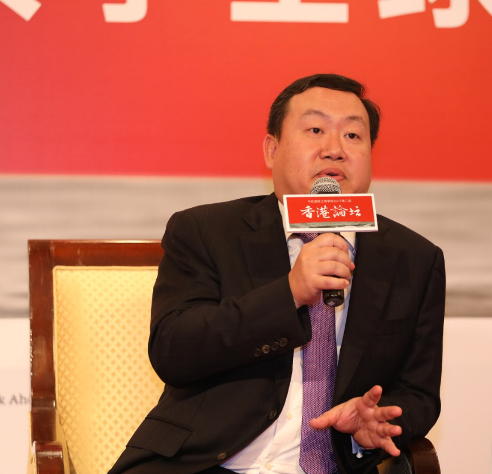Waiting for technology to catch up

Huang Zhengcong,
Chairman, Guangzhou Shiyuan Electronic Corporation
When employees of LCD screen maker Guangzhou Shiyuan Electronic Corporation ran out of space to write down their ideas during a brainstorming session on the future of the company, the idea for a new product was born – the interactive LCD screen. But their idea was way ahead of its time: internet speeds weren’t fast enough and the conferences market that they were targeting was used to much smaller screens. As they waited for technology – and their potential clients – to catch up with them, the agile company switched to a field that could immediately use a scaled down version of their product – education. It was enough to keep them from folding.
“We produce LCD panels. I’m an entrepreneur and I started out investing in and doing research on iPad screens. But the screens we’re making are larger.
We tried our product about 10 years ago. How did we come up with the idea? It’s not really because we had a grand vision to change the conferences market. It’s because at that time we recognised that there was a bottleneck in the LCD panel industry and we were worried about our long-term future development; so we tried brainstorming.
Everyone participated and everyone had to come up with some new ideas. We wrote them all on the white board, but then we very quickly ran out of space. Then we used a projector. That’s when this new idea came to us: why don’t we have interactive boards? This would be a combination of the projector and the white board; it would have the functions of both. So that’s how we started research on this new product in 2008.
Our product became available several years ago but we could not sell it in the market because at that time smaller screens (24 to 25 inches) were popular. Our screen is much bigger; so it was very difficult to sell. And it was also very expensive, as you can imagine.
Another challenge was that the internet speed much slower, four or five years ago. We didn’t have 4G yet; it was still 3G. So because our product is an interactive board, it needs an internet connection to work. But the slow speed of the internet, back then, meant the screen’s interactive function wasn’t very smooth.
So we had to wait for all the conditions to be right.
The conferences market was growing but while we waited to break through into that market, we had to survive. That’s why we thought about the education market, classroom applications. It wasn’t our first choice but it turned out to be a very good opportunity for us.
Now the global conferences market is very big. But we only account for one-one-thousandth of total market share; so we are not a very big player. But it does not mean we have failed. This year we have a more detailed plan for our production lines and we have already made a lot of progress so far.
If you use a computer for a video conference you still need to plug in a lot of things. But with our equipment you can easily connect, for example, at least eight computers. You do not need to plug in many things. You don’t even need to use any paper and the entire meeting process is very smooth and efficient. Our equipment can automatically take minutes of the meeting, so you do not need to ask a secretary to take notes. After the meeting, the minutes will be automatically emailed to participants. Everything is integrated and very convenient for users. That’s one way in which we engage in smart manufacturing.”
Edited excerpts from a panel discussion on Opportunities for Entrepreneurship and Investment in the Smart Manufacturing Industry at CEIBS Hong Kong Forum on April 21, 2017.
Click the links below for more details as they become available on CEIBS Europe Forums in:
London – July 6
Paris – July 11
Munich – September 13
Warsaw – September 15
Zurich – October 18.













